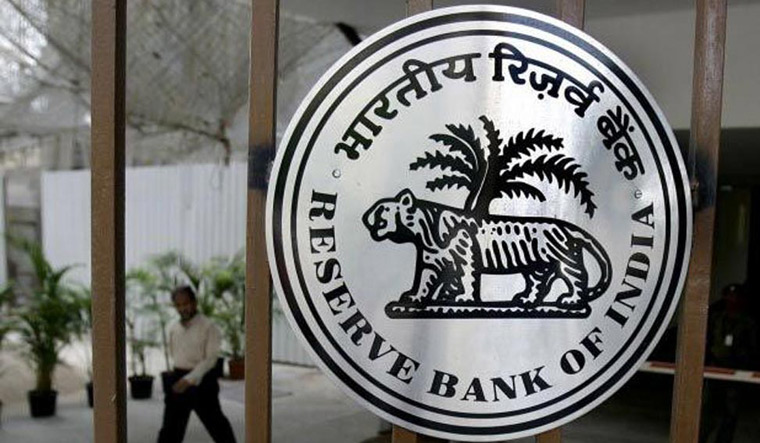Gradualism—that’s how Friday’s monetary policy announcement by RBI Governor Shaktikanta Das can be summed up. The monetary policy committee left the repo rate unchanged for the eighth time at four per cent. Reverse repo rate was also left unchanged and the “accommodative” stance continues.
At the same time, the central bank is done with its secondary market government securities acquisition programme (G-SAP), at least for now. Also, the liquidity mop up via variable rate reverse repo (VRRR) operations are being increased, again only gradually.
As Das himself put it, “our entire approach is one of gradualism. We do not want surprises.”
The monetary policy is clearly suggesting that the economy is getting back on track, but we are not fully there yet; inflation is back in the targeted zone, but a surge in prices of crude oil and other commodities globally needs to be watched out too.
“We don't want to rock the boat. We have to reach the shore, which is now visible and there is life, there is journey beyond the shore,” says Das.
So, how is the road looking ahead like. Is the interest rate cycle about to change over the next few quarters?
“Looking forward, while no rate hikes or change in stance is imminent and next few inflation prints may remain within RBI’s comfort band, in calendar year 2022, there is likelihood of reverse repo rate being hiked, liquidity conditions being further normalised and short-term money market rates rising by 25-50 basis points,” said Bekxy Kuriakose, head of fixed income at Principal Asset Management.
Madhavi Arora, lead economist at Emkay Global Financial Services says the RBI didn’t “shock” the system with a reverse repo hike and the policy is well used as a lever to prepare markets for a gradual approach towards normalisation through both communication and action.
“The RBI so far has been trying to redistribute existing liquidity and increase the price of liquidity by higher VRRR quantum/cut-offs/tenors. It has now finally moved a step ahead-reducing further active liquidity infusion by not announcing new G-SAP calendar after sterilising earlier two installments with a simultaneous sale of bonds,” said Arora.
A judicious mix of tools to manage liquidity will serve as a precursor to a reverse repo hike, possibly split between December and February MPC meetings with 15 basis points hike each, added Arora.
Looking ahead, it is not just how the inflation and growth trajectory pans out domestically that RBI will have to watch out for, but also what happens elsewhere around the globe, particularly the moves of the US Federal Reserve, which could have impact on emerging markets, including India.
Dhananjay Sinha, MD and chief strategist at JM Financial Institutional Securities sees the US Fed beginning to taper its quantitative easing from November and eventually hike interest rates in 2022.
While a strong dollar and improvement in credit demand should further reduce excess liquidity, the central bank may also have to deal with higher core inflation.
“Thus, there is a distinct possibility of policy normalisations in 2022, lower excess liquidity and rate hikes,” said Sinha.
The RBI adopted a calibrated and patient approach towards managing liquidity and monetary policy support, recognising that there are still some downside risks to growth, felt Abheek Barua, chief economist at HDFC Bank.
ALSO READ
- Kotak Bank's growth plans to take a hit post RBI restrictions on digital channels; shares plunge 11 pc
- RBI bars Kotak Mahindra Bank from onboarding customers online, issuing fresh credit cards
- Extreme weather may pose risk to inflation, says RBI Bulletin
- Normal monsoon predicted for 2024. Is it enough to bring down inflation?
The removal of G-SAP was a big surprise and in the background of high oil prices and rising US treasury yields, this could lead to a rise in long-term bond yields, said Pankaj Pathak, fund manager – fixed income, Quantum Mutual Fund.
Indranil Pan, chief economist at Yes Bank feels the RBI has kept the room open for a reverse repo rate hike in the next MPC meet in December. However, he doesn’t see any change to the repo rate in the current financial year.
Upasna Bhardwaj, senior economist at Kotak Mahindra Bank also feels the RBI would hike the reverse repo rate in the December.
“We believe that the increasing risks to inflation especially as the economic activity is picking up pace has prompted the MPC into taking liquidity normalisation measures ahead of our expectations. We expect additional liquidity normalisation measures like overnight VRRR, increased quantum of higher tenure VRRR in the months ahead before expecting a reverse repo rate hike in December,” said Bhardwaj.





